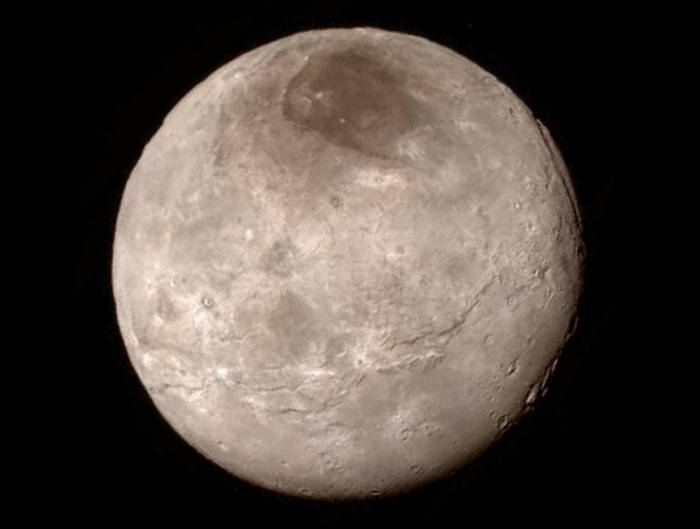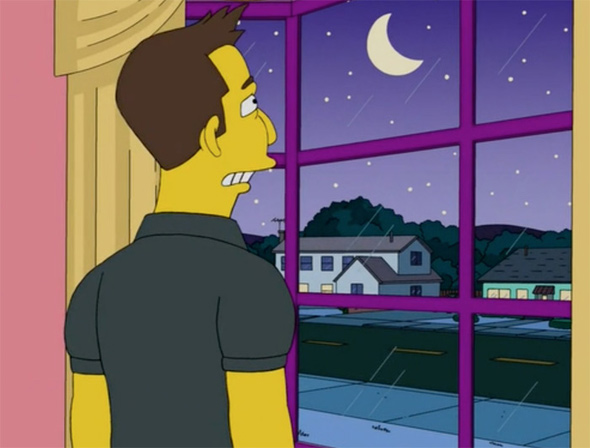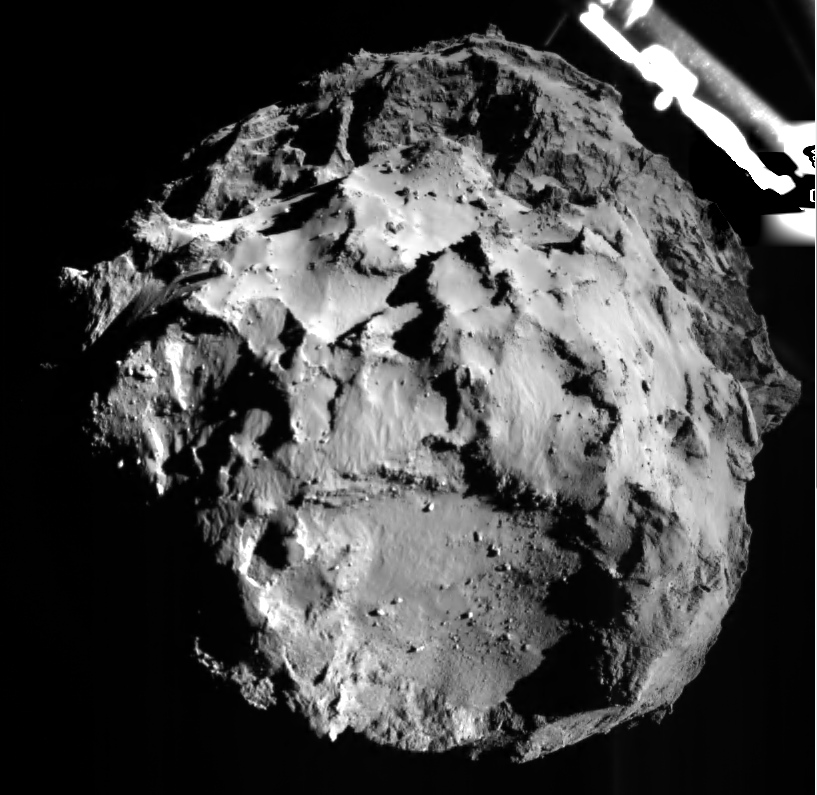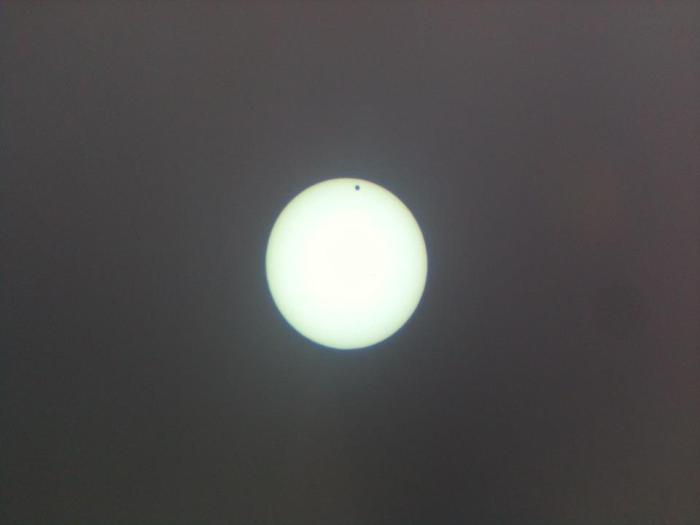I was born in June 1989. Just 2 months after that, the Voyager 2 spacecraft flew past Neptune on its way out of our solar system and for the first time ever we saw real close up pictures of the solar system’s outermost giant planet.
Of course, I was too young to remember this, but it means that as I’ve been growing up I’ve been able to see amazing and beautiful photos of the 8 planets of our solar system. Pluto is no longer classified as a planet, but nonetheless it has been conspicuously missing from this set for my whole life.
That is, until this week. After travelling for 9 1/2 years, the New Horizons spacecraft finally flew past the only remaining “classic planet” that we had not yet explored. We are seeing real close up pictures of a new world, one that we’ve never seen like this before. And it’s glorious:

This image is made by compositing the high resolution black and white image taken from LORRI (LOng Range Reconnaissance Imager) and colour imagery taken from Ralph (New Horizons’ colour imager). It was sent back to Earth by New Horizons prior to its exciting flyby of Pluto on Tuesday night (closest approach was 11:50 pm Tuesday 2015/07/14, New Zealand time), having been taken 16 hours ahead of time.
It sent back data ahead of time because during the 24 hour flyby New Horizons was busy collecting data. All of its instrumentation is built into the body of the spacecraft, so in order to point them the whole spacecraft needs to rotate. This means that in order to talk to Earth it has to look away from Pluto, so we had to wait in patient agony while it was collecting data.
After the flyby, New Horizons sent a packet of telemetry data back to Earth, containing information about how its systems were doing. The flyby was the most dangerous part of the mission; travelling at about 14 kilometres per second, an impact with even a tiny piece of debris could absolutely destroy the spacecraft and near Pluto is the most likely place to encounter such debris. Since New Horizons was travelling into the unknown, no one could guarantee this wouldn’t happen, although NASA was confident that the chance of such a collision was very low.
The “Phone Home” signal reached Earth at 12:52:37 pm on Wednesday 2015/07/15 (New Zealand time), telling us that everything went perfectly. New Horizons survived the flyby! The next stage of the mission is to send down all the data it collected, but getting data back from Pluto is hard. Even at the speed of light signals take over 4 hours to cross the distance, and the transfer rate varies from just 1 kb/s to a whopping 4 kb/s. It’ll take around 16 months to get all the data from the flyby down to Earth.
This morning (7am Thursday 2015/07/16 New Zealand time) NASA held a press conference in which they released some new images, including a high resolution image of Pluto’s largest moon Charon:

There’s a lot of interesting stuff going on here, for example that little notch you can see in the upper right is a canyon that’s 6-10 kilometres deep. So deep that you’re looking through it to the space behind Charon. The dark polar region at the top, which has been informally named “Mordor”, is also interesting. The fact that impact craters allow lighter material to peek through makes it seem as though the dark material on the surface is just thin layer. Apparently one possible cause of this could be some form of atmospheric transfer from Pluto.
At the press conference, NASA also released a much higher resolution of an area in the “heart” region of Pluto. The heart has been named Tombaugh Regio after Clyde Tombaugh, who discovered Pluto in 1930. Although he died in 1997, New Horizons carried some of his ashes on board to honour his request for his ashes to be taken to space. Here’s the image:

This is a very interesting image. The first thing you might notice is the mountains. These are about 3.5 kilometres tall, and almost certainly made of water ice. Also, there are no impact craters in this photo. That’s strange, really strange. It means that Pluto’s surface is new, probably less than 100 million years old.
Pluto is the first icy world we’ve seen that isn’t also the moon of a gas giant. Icy moons like Saturn’s moon Enceladus get stretched and heated by the tidal forces placed on them due to their close proximity to much more massive bodies. Tidal forces are caused by a gradient in the strength of gravity – parts of a body closer to a source of gravity experience a stronger force than those further away, and when this gradient is strong (which happens when you’re nearby a much larger body) the tidal forces are greater. The Moon’s tidal influence on Earth drives our oceanic tides, and the extreme tidal forces you’d experience crossing the event horizon of a black hole are what would turn you into a space noodle.
But Pluto isn’t near any other large bodies that could exert this sort of tidal force on it. Charon is around half its size, but Pluto and Charon are both tidally locked to one another, meaning the same parts always face each other, so the tidal forces never change. There must be some other process driving geological activity on Pluto, and we don’t know what that is yet.
There’s a lot more interesting stuff coming out of the New Horizons mission, and of course much more to come now that we’re getting data back. I recommend you follow Emily Lakdawalla’s blog at the Planetary Society for up to date and accurate information. Her latest article is a great overview of what we learned at this morning’s NASA press conference.
This isn’t the end for New Horizons, even after the 16 month period of sending all its data down it’s going to continue into the outer region of the solar system known as the Kuiper belt, and hopefully visit one or two more icy worlds.
For now, though, we have finally completed our reconnaissance of the solar system. This is the end of the beginning.







